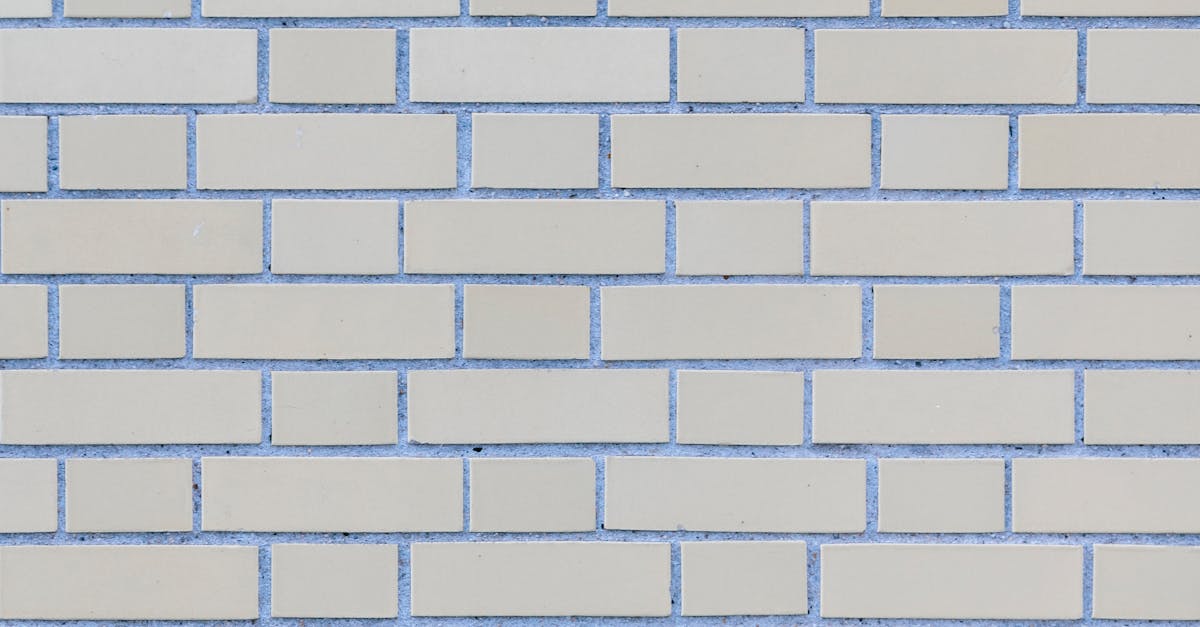
How to Choose the Right Sandstone for Your Project
Table Of Contents
competitive pricing. Factor in not just the stone itself but also related expenses such as labour and any necessary preparation work for the site.
Budgeting effectively requires a clear understanding of your project's scope. Initial estimates should account for the specific dimensions and design requirements. Consider potential additional costs, such as sealing or maintenance products if your project is outdoors. Allocating a contingency fund for unexpected expenses can also provide peace of mind during the installation process. By clearly outlining these financial aspects, you can ensure your project stays on track and within budget.Why is grouting important for natural stone walls?
gentle detergents and soft brushes, will help to remove dirt and prevent the build-up of algae or moss. Avoid harsh chemicals or high-pressure cleaning methods as these can damage the surface and deplete its natural colour. Sealants can be applied periodically to enhance durability and provide a protective layer against stains and weathering, ensuring the sandstone retains its aesthetic appeal and structural integrity.Maintenance of Grouted Stone Walls
Seasonal inspections enable homeowners to identify any potential issues early on. Look for cracks, chips, or signs of erosion that may require professional attention. Immediate repairs not only prevent further deterioration but also save on future restoration costs. Additionally, keeping foliage trimmed back can help reduce moisture retention around sandstone surfaces, which is beneficial in preventing long-term damage. With consistent care and timely interventions, sandstone can remain a beautiful and resilient choice for many years.Regular maintenance is crucial for preserving the integrity of grouted stone walls. Cleaning should be carried out periodically to remove dirt, grime, and any mildew that may form. A gentle solution of water and mild detergent will suffice for most surfaces. Avoid harsh chemicals and abrasive tools that may erode the stone or damage the grouting. Investigating early signs of wear is equally important, as small cracks or gaps can lead to more significant issues if left unattended.
FAQSIn addition to routine cleaning, sealing the grout every few years can provide an added layer of protection. This creates a barrier against moisture and stains, keeping the grout looking fresh and extending its lifespan. Inspecting for loose stones or any shifts in the wall’s structure helps in identifying potential problems before they escalate. By adopting these maintenance practices, the aesthetic appeal and durability of stone walls can be significantly enhanced.
What factors should I consider when choosing sandstone for my project?Tips for Care and Longevity
When selecting sandstone, consider factors such as colour, texture, durability, and suitability for your specific project. Additionally, evaluate the local climate and environmental conditions to ensure the sandstone will perform well over time.Proper care and maintenance of grouted stone walls can significantly extend their lifespan. Regular cleaning is essential to prevent the accumulation of dirt and grime. Use a mild detergent mixed with water and a soft-bristled brush for the best results. Avoid harsh chemicals that could damage the stone or compromise the grout integrity. Keeping the area free from debris and moisture will also help to prevent mould growth and staining.
How much should I budget for sandstone?Periodic inspection of the grout joints is crucial. Check for any signs of cracking or wear, and address any issues promptly to avoid further damage. Resealing the grout every few years can add an extra layer of protection against moisture penetration. In addition, consider using plant-based sealers that are environmentally friendly, ensuring the maintenance process aligns with sustainable practices.
Budgeting for sandstone can vary widely based on the quality, size, and type of sandstone chosen. It’s essential to factor in costs for installation, finishing, and any additional materials needed. It’s advisable to get quotes from local suppliers and contractors to establish a clear budget.Environmental Considerations in Grouting
What are the common installation methods for sandstone?The environmental impact of grouting materials cannot be overlooked. Many traditional grout options contain chemicals that may contribute to pollution. Choosing eco-friendly alternatives can help reduce this impact. Sustainable grouting products often feature lower volatile organic compounds (VOCs) and are manufactured from natural, recycled, or renewable materials. This not only aids in minimising harmful emissions but also supports a more sustainable construction industry.
Common installation methods for sandstone include dry stacking, mortar setting, and using adhesives. The best technique will depend on the specific project requirements, the type of sandstone, and the aesthetic you wish to achieve.In addition to selecting environmentally friendly products, responsible disposal methods for leftover materials play a crucial role in reducing environmental harm. Contractors and DIY enthusiasts should ensure that excess grout and cleaning agents are disposed of properly. Many local councils offer guidelines or facilities for recycling construction materials. Incorporating sustainable practices in grouting not only benefits the environment but can enhance the overall aesthetic and longevity of stone wall cladding.
How do I maintain sandstone after installation?Ecofriendly Grouting Options
Maintaining sandstone involves regular cleaning with a soft brush or cloth and mild detergent, avoiding harsh chemicals. Sealing the stone can also help prevent stains and damage, while regular inspections will ensure any issues are addressed promptly.The selection of eco-friendly grouting options has grown significantly, catering to both environmental sustainability and aesthetic appeal. Products made from natural, non-toxic ingredients promote a healthier environment and reduce the impact on local ecosystems. These grouts often incorporate recycled materials, limiting waste while maintaining high performance and durability. Additionally, certain opti
Comparing Sandstone to Other Natural Stones for CladdingYes, there are eco-friendly grouting options available, such as using low-VOC (volatile organic compounds) grouts, natural stone dust mixes, and breathable sealants that reduce environmental impact while still providing effective performance.
Best Practices for Cleaning Grout Lines in Natural Stone Installations
Common Mistakes to Avoid When Grouting Natural Stone